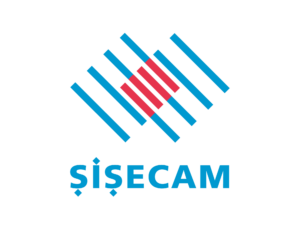Heutzutage werden immer mehr Online-Prüfungen und -Bewertungen durchgeführt. Aufgrund des jüngsten Ausbruchs von COVID-19 sind private Lernzentren und öffentliche Bildungseinrichtungen gezwungen, den Präsenzunterricht einzustellen und sich auf Online-Lernen umzustellen. Die von vielen Ländern verhängten Abstandsregeln und Ausgangssperren bedeuten auch, dass Prüfungen und Bewertungen nun aus der Ferne über das Internet durchgeführt werden.
Der Ausbruch des neuen Coronavirus ist nicht der einzige Faktor, der zum Anstieg des Online-Lernens beiträgt. Bereits vor der Pandemie prognostizierten Studien, dass der Markt für Online-Bildung aufgrund des Wachstums flexibler Lerntechnologien sowohl im Unternehmens- als auch im Bildungssektor bis 2025 weltweit ein Volumen von 350 Milliarden US-Dollar erreichen wird. Man kann mit Sicherheit sagen, dass Online-Lernen in absehbarer Zukunft nicht mehr wegzudenken sein wird.
Diese neue Art des Lernens ist vorteilhaft, da sie es Menschen ermöglicht, neue Fähigkeiten einfach, effizient und bequem von zu Hause aus zu erwerben und zu entwickeln. Es ist jedoch gut, den Unterschied zwischen Präsenzunterricht und Online-Lernen zu kennen, insbesondere wenn es um die Herausforderungen bei der Durchführung von online beaufsichtigten Prüfungen geht.
Das Sicherheitsproblem bei Online-Prüfungen
Bei der Durchführung von Online-Prüfungen gibt es folgende wichtige Sicherheitsaspekte zu beachten:
Authentifizierung der Studierenden.
Bei Präsenzprüfungen kann ein Prüfungsleiter die Identität der Studierenden überprüfen. Bei Online-Prüfungen kann es schwierig sein, die Studierenden zu authentifizieren, damit nur die richtigen Personen an den Prüfungen teilnehmen können.
Fairness bei der Prüfungsdauer.
Bei Präsenzprüfungen kann ein Prüfungsleiter oder Aufseher die Studierenden überwachen und daran erinnern, die Prüfung innerhalb der vorgegebenen Zeit zu beenden. Bei Online-Prüfungen ist es schwierig, sicherzustellen, dass alle Teilnehmer die gleiche Zeit für die Bearbeitung der Fragen haben. Die Teilnehmer haben möglicherweise nicht alle gleichzeitig Zugriff auf die Fragen.
Weitergabe vertraulicher Prüfungsfragen.
Es kann schwierig sein, Fragen für Prüfungen zu erstellen. Bei Online-Prüfungen können die Teilnehmer Screenshots oder Screenshots der Fragen machen und eine Kopie aufbewahren oder ins Internet hochladen, wodurch vertrauliche Prüfungsinhalte weitergegeben werden können.
Was sind mögliche Lösungen?
Alle Lösungen haben Vor- und Nachteile. Daher ist es wichtig, die für Ihre Anforderungen am besten geeignete Lösung zu finden. Jedes Lernzentrum hat möglicherweise einen etwas anderen Ansatz für die Auswahl einer Lösung zur Durchführung von Online-Prüfungen. Sehen wir uns die Optionen und Kriterien einmal an.
Prüfungsüberwachungssoftware:
Speziell entwickelte Lösung. Komplex und teuer?
Eine Prüfungsüberwachungssoftware ist eine spezielle Software für Online-Prüfungen, mit der Schüler und Studenten einen Test online an einem entfernten Ort ablegen können. Während der Prüfung wird der Schüler in der Regel mit Hilfe einer Webcam, eines Mikrofons und Zugriff auf den Computerbildschirm überwacht, um betrügerisches Verhalten während der Online-Prüfungen zu erkennen.
Der Funktionsumfang einer Prüfungsüberwachungssoftware kann die Überprüfung der Identität, automatisierte Überwachung, Sperrung des Computers und professionelle Überprüfung umfassen. Doch selbst mit all diesen Sicherheitsfunktionen kann nicht garantiert werden, dass Betrug vollständig verhindert wird.
Es gibt kreative Möglichkeiten, bei Online-Prüfungen zu betrügen, beispielsweise durch die Verwendung kleiner Bluetooth-Geräte, die praktisch nicht zu erkennen sind. Es ist auch bekannt, dass Schüler die Bildschirmfreigabe und -spiegelung nutzen, indem sie sich von einem anderen Gerät aus bei einem Drittanbieter anmelden, um zu betrügen.
Ein weiterer zu berücksichtigender Faktor ist die technische Komplexität, die zu Verzögerungen während der Prüfungen führen kann. Beispielsweise ist manche Software nur mit einem bestimmten Internetbrowser oder Betriebssystem kompatibel. Ganz zu schweigen davon, dass möglicherweise jeder Schüler sich für ein Konto anmelden und zusätzliche Plugins herunterladen muss, um den Test zu absolvieren.
Darüber hinaus kann der Preis für eine Prüfungsüberwachungssoftware je nach Länge und Häufigkeit der Prüfung und dem erforderlichen Überwachungsgrad hoch sein. Die Online-Überwachungslösung von Examity kostet beispielsweise ab 17 US-Dollar pro Stunde und Schüler, einschließlich Live-Authentifizierung und Überwachung. Weitere Alternativen zu anderer Prüfungsüberwachungssoftware sind Proctorio und ProctorU.
| Bewertungskriterien | Prüfungsüberwachungssoftware |
| Sicherheit | Speziell für Online-Prüfungen entwickelt. Die Sicherheitsanforderungen sind im Allgemeinen alle erfüllt.
Authentifizierung: Fortschrittliche Gesichtserkennungstechnologie und automatisierte Verifizierung. Fairness: Anpassbare Admin-Einstellungen, um für alle Schüler die gleiche Prüfungsdauer zu gewährleisten. Lecks: Zusätzliche Schritte erforderlich, um zu verhindern, dass Schüler schummeln und die Prüfungsfragen an andere weitergeben. |
| Benutzerfreundlichkeit | Komplex mit einer Reihe von Funktionen zur Auswahl und möglicherweise nicht auf allen Geräten kompatibel. |
| Kosten | Variieren. Bestimmte Lösungen können sehr teuer sein, da die Anzahl der Schüler, die Prüfungsdauer und die Häufigkeit zunehmen. |
| Erste Schritte | Variieren. Bei einigen Lösungen kann es lange dauern, bis sie evaluiert und erlernt sind. Sie sind möglicherweise ungeeignet für einzelne Lehrer oder kleinere Organisationen, die eine schnelle und einfache Lösung benötigen. |
E-Mail + Webcam:
Eine schnelle Lösung, aber nicht sicher.
Eine weitere schnelle und einfache Lösung ist die Verwendung von E-Mail und Webcam zur Durchführung von Online-Prüfungen unter Aufsicht. Dabei beobachten Sie die Schüler über die Webcam auf verdächtiges Verhalten, während Sie die Prüfungsfragen per E-Mail versenden, um Betrug zu minimieren. Sie können die Schüler auch anweisen, die Umgebung zu zeigen, in der die Prüfung durchgeführt wird, um sicherzustellen, dass keine versteckten Geräte vorhanden sind und keine Hilfe von Dritten in Anspruch genommen wird.
In Kombination sind E-Mail und Webcam eine relativ einfache und kostengünstige Möglichkeit, Online-Prüfungen durchzuführen. Sie benötigen lediglich ein E-Mail-Konto, einen Computer mit Webcam und eine aktive Internetverbindung – Dinge, die Sie wahrscheinlich bereits haben. Es fallen keine zusätzlichen Kosten für Software-Abonnements an, und für die Webcam können Sie in der Regel eine Konferenzlösung verwenden.
Darüber hinaus sind Datenschutzbedenken während Webcam-Sitzungen ein weiterer Faktor, der berücksichtigt werden muss, wenn Dritte die Audio- und Videoaufzeichnungen der Webcam-Sitzung missbrauchen. Schließlich kann es ineffizient sein, viele Schüler gleichzeitig auf einem kleinen Computerbildschirm zu beobachten, insbesondere um verdächtiges Verhalten zu erkennen.
Obwohl dies eine praktikable Lösung ist, ist die Sicherheit der größte Nachteil dieser Option. Die Authentifizierung kann eine Herausforderung sein, da E-Mails ohne Schutz empfangen und geöffnet werden können. Es wird schwierig sein, allen genau die gleiche Zeit für die Bearbeitung der Tests einzuräumen. Es gibt keine einfache Möglichkeit, die Dateien vor dem Verlust zu schützen.
| Bewertungskriterien | E-Mail + Webcam |
| Sicherheit | Extrem gering. Anfällig für Betrug und Weitergabe von Inhalten. Authentifizierung:: Persönliche Videoanrufe können bei einer großen Anzahl von Schülern sehr zeitaufwendig sein. Fairness: Sie können sicherstellen und alle darüber informieren, dass der Test zur gleichen Zeit beendet wird; dies ist jedoch keine perfekte Lösung. Leakage: Für die Schüler ist es sehr einfach zu betrügen, und der Prüfungsinhalt kann heruntergeladen und weitergegeben werden. |
| Benutzerfreundlichkeit | Sehr einfach zu bedienen, keine zusätzlichen Tools oder Systeme erforderlich. |
| Kosten | Sehr geringe Kosten und kostenlos, ohne kostenpflichtiges Abonnement oder Konto. |
| Erste Schritte | Sehr einfach und unkompliziert. |
E-Mail + Webcam + Sicherheit von Dokumenten:
Eine praktikable Option?
Es gibt eine zusätzliche Lösung, die Sie bei der Verwendung von E-Mail und Webcam für Online-Prüfungen hinzufügen können, um diese sicherer zu machen. Sie können eine Lösung für die Sicherheit von Dokumenten in Betracht ziehen, mit der Sie vertrauliche Kursmaterialien und Prüfungsinhalte sicher versenden können.
Eine Lösung für die Sicherheit von Dokumenten ist eine integrierte Lösung, die die konforme Sicherheit von Dokumenten mit einer Vielzahl von Funktionen kombiniert, damit Sie die Kontrolle über Ihre einzigartigen Inhalte behalten und besser verhindern können, dass Informationen verloren gehen, die die Integrität der Prüfung gefährden könnten.
Sie können weiterhin die Webcam verwenden, um die Schüler zu überwachen, und die Prüfungsfragen in Form von Dokumentanhängen per E-Mail versenden. Der Unterschied besteht darin, dass Ihre Dokumentanhänge nun verschlüsselt und nachverfolgbar sind und Sie die Kontrolle darüber haben, wer darauf zugreifen kann und wie lange.
Dank der Funktionen zum Einschränken des Herunterladens und Weiterleitens wird es für die Schüler schwieriger, Prüfungsinhalte weiterzugeben. Sie können die Prüfungsdokumente auch so einstellen, dass sie sich zu einem bestimmten Zeitpunkt selbst zerstören, und den Bildschirmschutz aktivieren, um Screenshots zu verhindern.
Allerdings gibt es noch einige Nachteile, da diese Methode nicht für Prüfungen geeignet ist, die eine Bearbeitung in Echtzeit oder interaktive Funktionen erfordern. Außerdem verfügt sie nicht über eine Funktion zur persönlichen Überwachung, sodass Sie weiterhin auf die Webcam angewiesen sind, um die Prüfungsteilnehmer zu überwachen.
| Bewertungskriterien | E-Mail + Webcam + Sicherheit von Dokumenten |
| Sicherheit | gewährleistet. Das Versenden von Prüfungsdokumenten ist sicher und nachvollziehbar. Authentifizierung:: Sie können festlegen, dass nur die richtigen Personen Zugriff auf die Prüfungsdokumente haben. Fairness: Sie können die Prüfungsdokumente auch so einstellen, dass sie zu einem bestimmten Zeitpunkt ablaufen. Leakage: Der Prüfungsinhalt ist verschlüsselt und kopiergeschützt. |
| Benutzerfreundlichkeit | Ziemlich einfach zu bedienen, ein zusätzliches E-Mail-Plugin erforderlich. |
| Kosten | Ziemlich günstig, verschiedene Tarife zur Auswahl. |
| Erste Schritte | Ziemlich einfach, schnell und unkompliziert. |
Digify Document Security kann Ihnen dabei helfen, Sicherheitsrisiken zu minimieren.
Als Bildungseinrichtung unterscheiden Sie sich durch Ihre einzigartigen Inhalte von anderen und können es sich nicht leisten, dass diese ohne Ihre Zustimmung weitergegeben oder kopiert werden. Eine Lösung für die Sicherheit von Dokumenten wie Digify kann Ihnen dabei helfen, Ihre einzigartigen Inhalte beim Versand vertraulicher Dokumente vor dem Zugriff Unbefugter zu schützen.
Authentifizierung: Nur die richtigen Personen haben Zugriff auf das Prüfungsdokument.
Mit der Zugriffskontrolle von Digify können Sie einschränken, wer auf die Dateien zugreifen darf, und Berechtigungen jederzeit widerrufen. Sie können eine zusätzliche E-Mail-Überprüfung hinzufügen, bei der jeder, der auf Ihr Dokument zugreift, einen eindeutigen Code eingeben muss, der an seine E-Mail-Adresse gesendet wird.
Fairness: Jeder hat die gleiche Zeit, um die Fragen zu bearbeiten.
Mit der Selbstzerstörungsfunktion von Digify können Sie Fairness bei der Prüfungsdauer gewährleisten. Dabei handelt es sich um einen Mechanismus, bei dem sich das Dokument automatisch zerstört, nachdem eine Reihe von vordefinierten Bedingungen erfüllt sind. Im Gegensatz zum Ablauf beginnt der Countdown erst, wenn das Dokument geöffnet wird. Um beispielsweise einen zweistündigen Test durchzuführen, stellen Sie die Prüfungsdokumente so ein, dass sie sich automatisch zwei Stunden nach dem Öffnen der Dateien durch die Schüler selbst zerstören.
Leckage: Verhindern Sie die unbefugte Weitergabe und reduzieren Sie die Aufrufe der Fragenbank.
Sichern Sie Ihre Prüfungsdokumente mit Funktionen zum Einschränken der Weiterleitung, des Herunterladens und des Druckens. Um den Kopierschutz weiter zu erhöhen, können Sie auch die Bildschirmschutz-Technologie von Digify verwenden. Diese Funktion verhindert Screenshots, indem sie den sichtbaren Bildschirmbereich mit einem Wasserzeichenfilter reduziert. In diesem Fall können Sie den sichtbaren Bildschirmbereich der Fragenbank mit einem Wasserzeichenfilter reduzieren, sodass jeweils nur eine Frage angezeigt werden kann.
Unterstützung durch Dritte: Anmeldungen von mehreren Geräten werden aufgezeichnet.
Die Tracking-Protokolle von Digify liefern Ihnen hilfreiche Informationen, wie z. B. verdächtige Standorte und IP-Adressen. Wenn Sie die Schüler über diese Funktion informieren, ist es weniger wahrscheinlich, dass sie während der Online-Prüfungen schummeln und Hilfe von Dritten in Anspruch nehmen.
Digify bietet weitere Funktionen, die für Sie interessant sein könnten. Weitere Informationen finden Sie in unserem Abschnitt „Funktionen“.
Fazit
Eine Prüfungsüberwachungssoftware könnte die Lösung für die Durchführung von Online-Prüfungen sein, wenn Sie über die erforderliche Zeit und die entsprechenden Ressourcen verfügen. Sie wurde speziell entwickelt, damit Schüler und Studenten Online-Prüfungen sicher ablegen können. Allerdings sollten Sie die technischen Komplexität und die hohen Kosten dieser Lösung berücksichtigen.
Eine schnelle und kreative Lösung wäre die Kombination von E-Mail und Webcam zur Durchführung von Online-Prüfungen. Digify Document Security kann Sicherheitsbedenken ausräumen und dabei helfen, die Integrität Ihrer Online-Prüfungen zu wahren und gleichzeitig die Weitergabe von Inhalten zu verhindern.
Starten Sie noch heute Ihre 7-tägige kostenlose Testversion und genießen Sie eine reibungslose Erfahrung beim Versenden vertraulicher Dokumente für Online-Prüfungen.








